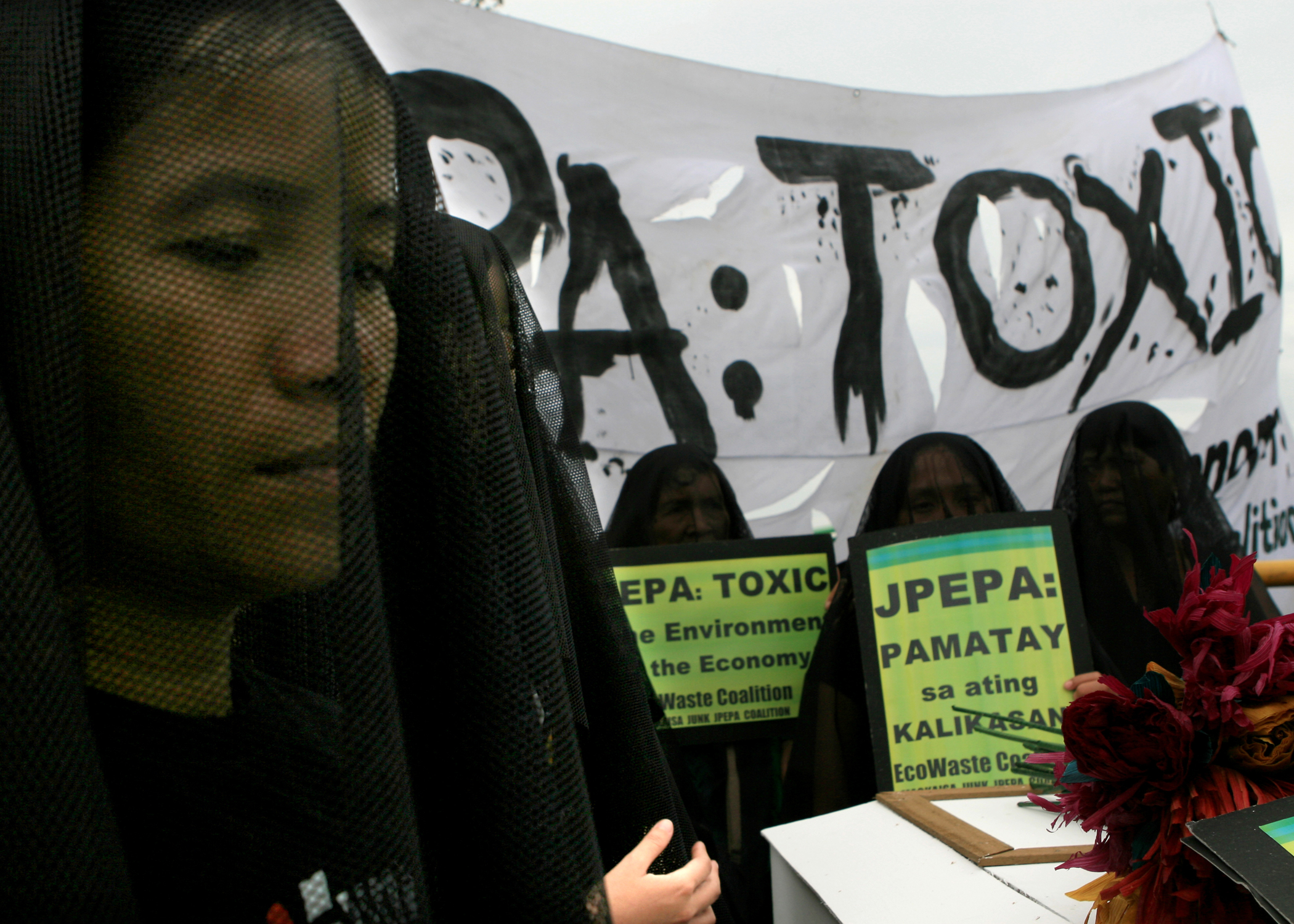Global crisis puts Jpepa to test
Business Mirror, Manila
Global crisis puts Jpepa to test
Opinion/ By The Entrepreneur / Manny Villar
15 February 2009
The Japan-Philippines Economic Partnership Agreement (Jpepa) would be put to a test under the current global financial turmoil and recession.
The controversial agreement, which was lengthily and sometimes bitterly debated in the Senate, brought out even noneconomic and nontrade issues like environment protection and health hazards.
In the end, the Senate ratified the pact, despite some reservations, to give the Jpepa a chance to deliver on its promises of bigger Japanese investments in the Philippines, more Philippine exports to Japan, and the opening of the Japanese job market to Filipino professionals.
On the other side of the equation, we must also see if the fears of the environmentalists-that the Jpepa would make the Philippines a dumping ground for hazardous and toxic waste from Japan-are well-founded or not.
And, of course, it is too early to be looking at the benefits from the agreement because we approved the Jpepa only recently. It would be unfair to demand results within such a short period.
On the other hand, we want to find out if there are at least some signs, whether seeds are being planted, plans are being made, or we are getting interest from the Japanese on the things that were promised in the pact.
The Philippine government has initiated moves that should speed up the flow of capital from Japan. Specifically, our economic managers went on a road show last month to encourage Japanese investors to participate in Philippine infrastructure projects under the Economic Resiliency Plan, which is designed to help our economy survive the global crisis.
Infrastructure is a good choice for investments. It is capital-intensive, which Japanese investors could provide, and generates a lot of jobs, which many of our people need at a time when the global recession is taking its toll on our economy.
If it is as good as promised, the Jpepa should also help counter the decline in our exports. In 2007, Philippine exports grew by only 2.9 percent ; this year, our exports are projected to contract by 3 percent. Under the best-case scenario, export growth is expected to be flat for 2009.
Already, we are seeing the adverse impact of declining exports. Thousands of workers in the electronics industry, which account for two-thirds of our exports, have been laid off with the shutdown of electronics plants and retrenchments in other companies.
The Semiconductors and Electronic Industries in the Philippines Inc. estimates an 8-percent to 10-percent drop in sales this year. This means a decline in export receipts from about $30 billion last year to about $27 billion this year.
The electronics industry is the big player in the export sector in terms of value of goods, but the bulk of workers in export-oriented industries are employed by small and medium enterprises (SMEs), many of which have begun to stop operations even before the electronics manufacturers.
These SMEs include producers of giftware and décor, exports of which are projected to drop by 20 percent ; and textile, apparel, footwear and travel goods, which are expected to drop by 25 percent.
Of course, there are some bright spots. Business leaders in the export sector believe that exports of processed food, agricultural and marine produce will continue to grow.
This is where the Jpepa can come in. It provides for the better access to the Japanese market for food products from the Philippines. Japan may be in recession, but its people are not expected to cut on food purchases.
I hope the expectations of local food producers of a 10-percent growth in exports this year will be achieved through the Jpepa.
I think the training program set for February 24, hosted by the Japan International Cooperation Agency, is indeed timely and relevant. The program will help exporters become quite familiar with the Japanese market so they can take advantage of the preferential access to the Japanese market under the Jpepa.
The event will feature a videoconferencing seminar entitled “Approach to Japanese Food Market-Japanese Business Habits and Consumer Facility.”
This may be one of the signs we are looking for, but we will need to see concrete signs, such as actual increases in shipments of Philippine-made products to Japan, and actual investments coming from Japan.
Of course, as I said earlier, it’s too early to look for the actual benefits from the Jpepa. But we can monitor the developments, such as the feedback from the road show in Japan. It will also be a learning process for us, and will help us when we negotiate similar or other agreements with other countries.
Monitoring will let us know whether the promises given us by foreign governments were promises to be broken.
Let’s not forget-the Jpepa may have somehow divided a lot of our people and policymakers during the Senate and public debates, but now it would be very interesting to find out if it will divide us in the future.






